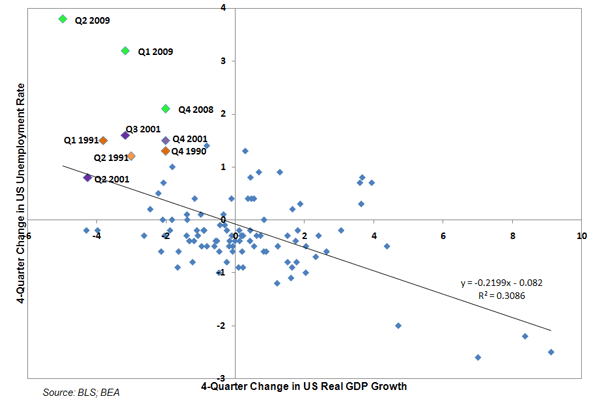Contents
The site provides comprehensive and real time information on Indian corporates, sectors, financial markets and economy. On the site we feature industry and political leaders, entrepreneurs, and trend setters. The research, personal finance and market tutorial sections are widely followed by students, academia, corporates and investors among others. Under this option, an issuer company may issue FCEBs in foreign currency, and these FCEBs are convertible into shares of another company that forms part of the same promoter group as the issuer company. For example, company ABC Ltd issues FCEBs, then these FCEBs will be convertible into shares of company XYZ Ltd that are held by company ABC Ltd and where companies ABC Ltd and XYZ Ltd form part of the same promoter group. Under the said Regulations, prior approval of the RBI would be required for issue of FCEB.
“Largely, the money raised through FCCBs was used for inorganic growth or expansion. In most cases, these bonds were issued when the stock market was bullish and companies were able to get premium valuations,” says Vikram Hosangady, partner, KPMG. International Monetary Fund explains that foreign direct investment is the category of international investment that reflects the objective of obtaining a lasting interest by a resident entity in one economy in an enterprise resident in another economy. The lasting interest implies the existence of a long-term relationship between the direct investor and the enterprise and a significant degree of influence by the investor on the management of the enterprise. This definition is taken from the Securities and Exchange Board of India guidelines, 2000 and The Companies Act, 1956.
[ An Indian Party may extend a loan or a guarantee to or on behalf of the Joint Venture/Wholly Owned Subsidiary abroad, within the permissible financial commitment, provided that the Indian Party has made investment by way of contribution to the equity capital of the Joint Venture. We have considered the submissions of the learned counsel for the Assessee. We find that in the present case, the 1st year in which relief was allowed u/s.35D of the Act has since been modified. Though such modification happened after the order u/s.263 of the Act, which order is impugned in this appeal, it cannot be said that the 1st year of allowance of deduction u/s.35D of the Act stands allowed as claimed by the Assessee. In none of the decisions relied upon by the Assessee, it has been held that even if the 1st year of allowance of a claim is withdrawn at a later point of time, still the revisional order would be bad in law on the ground that the 1st year a claim had been allowed. We are of the view in such circumstances, the exercise of jurisdiction cannot be attacked on the ground that it is only in the 1st year of allowance of a claim which is to be allowed over a period of time that jurisdiction u/s.263 can be exercised.

The ECB Master Circular lays down that borrowing funds through FCCB issue can be accessed under two routes, viz., FCCBs Issue upto US $ 500 million under the Automatic Route FCCBs Issue beyond US $ 500 million with the specific approval of the Reserve Bank i.e. under the Approval Route. The Government of India considers the funds raised through the FCCB issue as Foreign Direct Investment . A. Prior intimation to be given to the Stock Exchange by the issuer company listed at the Stock Exchange, atleast 7 days before the date of Board meeting in which the FCCB issue is to be considered. Ø FCCBs are generally listed on the national and regional stock exchanges to improve liquidity. Ø Credit rating of Bonds is not mandatory, since corporations having excellent track record mostly issue such Bonds.
263 of the Act, as the order being erroneous and prejudicial is a clear possibility particularly the assessing authority not disclosing the basis. 2.14 In the present case, the assessee has provided detailed explanations before the AO regarding the deduction claimed under section 35D vide letters dated November 22, 2011 and December 9, 2011. Copies of relevant extracts of these submissions are enclosed herewith as Annexure 8. 1.12 In view of the above discussions, the assessee has rightfully claimed the aforesaid expenditure as ‘cost of project’ for the purpose of acquisition of Subex Americas Inc and Subex UK Limited. However, in the wake of the larger derivatives fiasco, the Institute of Chartered Accountants of India has now issued a new accounting standard that exhorts companies to take into account all future liabilities. Although this new standard becomes mandatory only from 2011, it is of a recommendatory nature from 2009.
The stock market, already worried over India’s current account deficit,
On the above issue, the CIT held that the definition of cost of project in Expln. Below Sec.35D of the Act referred to “actual cost of the fixed assets, being land, buildings, leaseholds, plant, machinery, furniture, fittings and railway sidings , which are shown in the books of the Assessee”….. The CIT held that the cost of acquisition of the two businesses were shown as “Investments” by the Assessee in its Balance sheet and the same cannot be called “Fixed Assets” and therefore the claim in this regard by the Assessee cannot be https://1investing.in/ accepted. On the above issue, the learned counsel for the Assessee reiterated submissions as were made in reply to the show cause notice u/s.263 of the Act. We have considered his submissions and are of the view that admitted case before us is that the AO while completing the assessment did not go into the question of computation of capital employed for allowing deduction u/s.35D of the Act. The enquiry made by the AO was only with regard to the details of expenditure incurred on which deduction u/s.35D of the Act was claimed.

Increase or decrease in liability for repayment of foreign loan should be taken into account to modify the figure of actual cost in the year in which the increase or decrease in liability arises on account of fluctuation in the rate of exchange, irrespective of the date of actual payment in foreign currency. For companies, FCCBs gave them access to funds at cheaper rates, given the fact that many of these were zero coupon bonds with a yield-to-maturity structure, meaning the company would have to make large-scale payments only when the bonds were redeemed. Also, the interest rates were much lower than that of normal debt. In fact, given the boom in the markets and rising share prices, the assumption was that a larger number of bondholders would choose to convert their bonds into shares eventually. The company could also then benefit from the lack of outflows from their reserves.
What can companies do?
At the same time, these bonds also give the bondholder the choice to convert them into ordinary shares, either in whole or in part. Whereas, ADRs are denominated in US dollars, issued and traded on USA USA stock exchange only. Few of the differences includes- GDR can be issued in the USA and other European countries. It is listed on the fccb meaning stock exchanges of USA and Luxembourg. Filing of information with the RBI within 30 days from the issue date including total amount of the Bonds issued, names of the investors resident outside India and the amount repatriated to India supported by Foreign Inward Remittance Certificates as provided by Notification FEMA No. 120 i.e.

The Foreign Exchange Management Regulations, 2004, under Part III – Investments in Foreign Securities other than by way of Direct Investment. Credit Rating Agency means a body corporate which is engaged in, or proposes to be engaged in the business of rating of securities offered by way of public or rights issue as defined under 2 of the Securities Board of India Regulations, 1999. Bond is an obligation to pay a fixed sum of money, at a definite time and with a stated interest. Therefore bond is generally a long-term debt security. Debenture as defined under section 2 of The Companies Act, 1956 includes debenture stock, bonds and any other securities of a company whether constituting a charge on the assets of the company or not. E) Unlisted companies already issued ADRs/GDRs have to list in the domestic market on making profit or within three years of such issue whichever is earlier.
FCCB issue by the Indian Companies need to conform with various regulatory
The laws of the financial world are different from the physical world. You can have prolonged periods of time, when sanity takes a back seat and excesses happen. Scheme 2008 issued by Ministry of Finance, Department of Economic Affairs. However, FCCB redemptions will drop sharply in 2013 and 2014 as a majority of FCCBs issued at the market peak of 2007 are due for redemption this year, according to IIFL Institutional Equities. “Corporate profitability will fall. The market has already discounted this,” says Ramanathan of ING. In addition, there are companies which will see FCCB redemptions in the second half of the year.
Generally, large listed multinational companies that have a presence worldwide issue foreign currency convertible bonds to raise capital in foreign currency. These bonds inherit all the features of a convertible bond. In other words, the company issues this bond in foreign currency, which means that principal and interest payments are also payable in foreign currency. The Assessee issued GDRS and FCCBs and incurred expenditure in this regard.
The Mumbai Representative Office of The Bank of New York Mellon serves as The Bank of New York Mellon’s liaison in connection with the Bank’s India-based relationships. These include relationships with both Indian state banks and private sector banks. The Mumbai Representative Office also serves as the Bank’s liaison with the overseas branches of several Indian banks. In the present case, while there is no doubt that the assessee is entitled to claim deduction in terms of the arts. 23 and 23 of the agreements between India with Canada and Thailand respectively, the question is one of what exactly was the entitlement ?
- Most offerings had conversion prices at a “premium” to the then market price, assuming, as investors do, that stocks only go up in the long term.
- Get access to our equity, fixed income, macro and personal finance research, model equity and fixed-income portfolios, exclusive apps, tutorials, and member community.
- These corporate bonds are sometime issued as convertible bonds with the option of being converted to equity.
- Take for instance, Reliance Communications , the flagship company of the Anil Dhirubhai Ambani Group.
- The proceeds of FCEB may be invested by the issuing company overseas by way of direct investment including in joint ventures or wholly owned subsidiaries abroad.
It may be noted that issuing company is to be the part of promoter group of offered company and the offered company is to be listed and be eligible to receive foreign investment. The bonds are exchangeable into equity shares of another company which is also called the offered company. “I would recommend investors to stay away from stocks of companies with foreign currency exposure, both FCCBs as well as external commercial borrowings, or ECBs” he says.
The FCCB proceeds shall not be used for investment in Stock Market, and may be used for such purposes for which ECB proceeds are permitted to be utilized under the ECB schemes. The maturity of the FCCB shall not be less than 5 years. The call and put option, if any, shall not be exercisable prior to 5 years. Provided further that the consideration for the purchase does not exceed the ceiling as stipulated by the Reserve Bank from time to time.
Lawyers in India – Search By City
Until the conversion option is exercised, the interest payment on these bonds are subject to deduction to TDS at a rate of 10%. These bonds have lower interest rates than regular bonds because of the inherent option available to investors for conversion into equities. Take for instance, Reliance Communications , the flagship company of the Anil Dhirubhai Ambani Group. The company had raised $500 million through FCCBs, of which the outstanding amount is $296 million and the maturity date is May 10, 2011. The intra-day trading price of the companys share on March 9 was R91 against the conversion price of R689.8, meaning it is 86.8% below the realistic base conversion price. Attention of authorised dealers is invited to the Foreign Exchange Management Regulations, 2000 notified by the Reserve Bank vide Notification No.
ET has earlier reported that Kumar Mangalam Birla, chairman of the Aditya Birla Group and a Vodafone Idea co-promoter, is likely to infuse around $200 million of his personal funds in the loss-making telco, with the other parent – UK’s Vodafone Group – also likely to bring in a similar amount. Due to the government stake, Vodafone Group’s holding is likely to fall from 44.39% to 28.5% and ABG’s holding, from 27.66% to 17.8% in Vi. Vi has been in talks for several months with a slew of PE players such as US-based Apollo Global for equity and debt funding, but hasn’t managed to seal a deal yet. Its top management has previously said that the telco will finalise a funding deal by March end, a stance that its managing director Ravinder Takkar reiterated on Wednesday. Vodafone Idea is veering around towards the overseas convertible bonds option to raise between $750 million (around ₹5,550 crore) and $1 billion (around ₹7,400 crore) at the earliest, to pay its vendor dues, meet loan repayment obligations and also fund capex plans, people familiar with the matter said.
Under such a mechanism, the companies issue shares to the depositories who in turn issue these ADRs/GDRs to the ultimate investors functioning in the international markets. For this purpose the entities issuing the ADRs/GDRs enter into an agreement with the depository to the effect that the depository would not exercise voting rights in respect of shares held by them or they would exercise voting rights as directed by the managerial authorities of the issuer companies. With the opening up of the Indian economy there has been a considerable statistical enhancement and substantial improvement in the countrys foreign exchange reserves, constructive growth in the foreign trade, and rationalization of various tariffs. In our view the facts of the case in the decision of the Madras High Court in the case of PVP Ventures Ltd. , is identical to the facts of the case of the Assessee in this appeal. FCCBs are instruments issued to investors for raising funds which is repayable after certain period.
Market dynamics and give a clear picture to our clients of the ensuing prospects. We also do an exhaustive due diligence and a detailed assessment before and after floating of FCCBs, ADRs & GDRs. Our services include complete range of formalities and procedures connected with the issuance, right from the start.
Different Forms of Euro Equity Issue:
However, there is a constant watch on such corporate actions as these steps are an open invitation to either Foreign Investments or what the regulatory authorities term it to be Foreign Intervention. Despite the bright prospects, the Indian stock markets have been known for severe manipulations and it is suspected that the recent boom has come in handy for several unscrupulous elements to take advantage of such market gyrations. To sum up, its the primary responsibility of the government to ensure that the Indian Corporates exploiting such avenues are duly complying with the instructions and the finances thus borrowed, are in conformity with the prescribed guidelines and any contravention are to be viewed seriously attracting penal action. In the recent past, some Corporates have raised funds through issue American Depository Receipts and/or Global Depository Receipts.